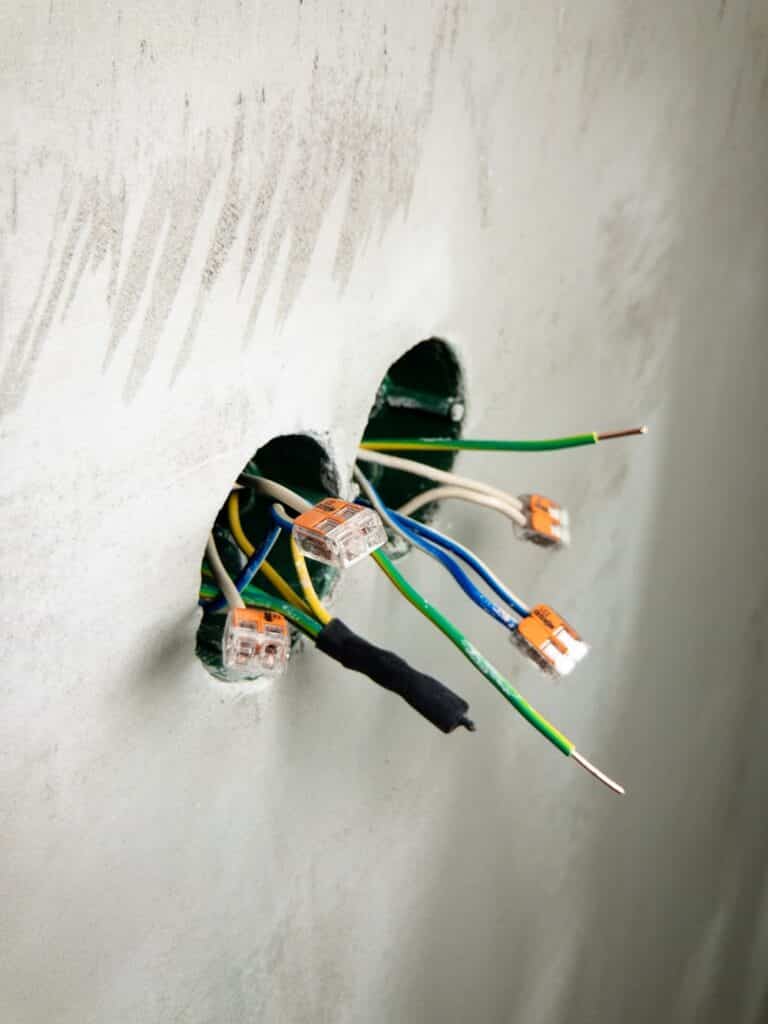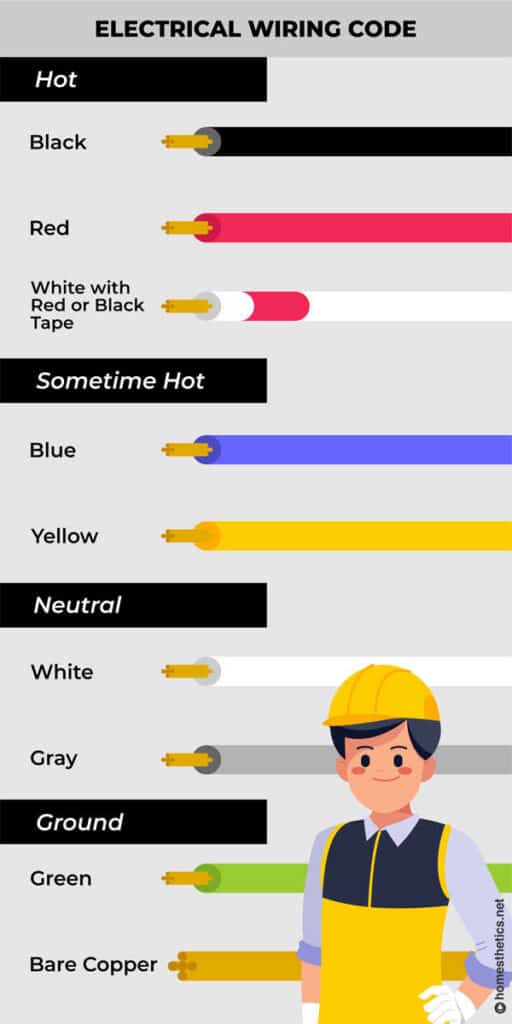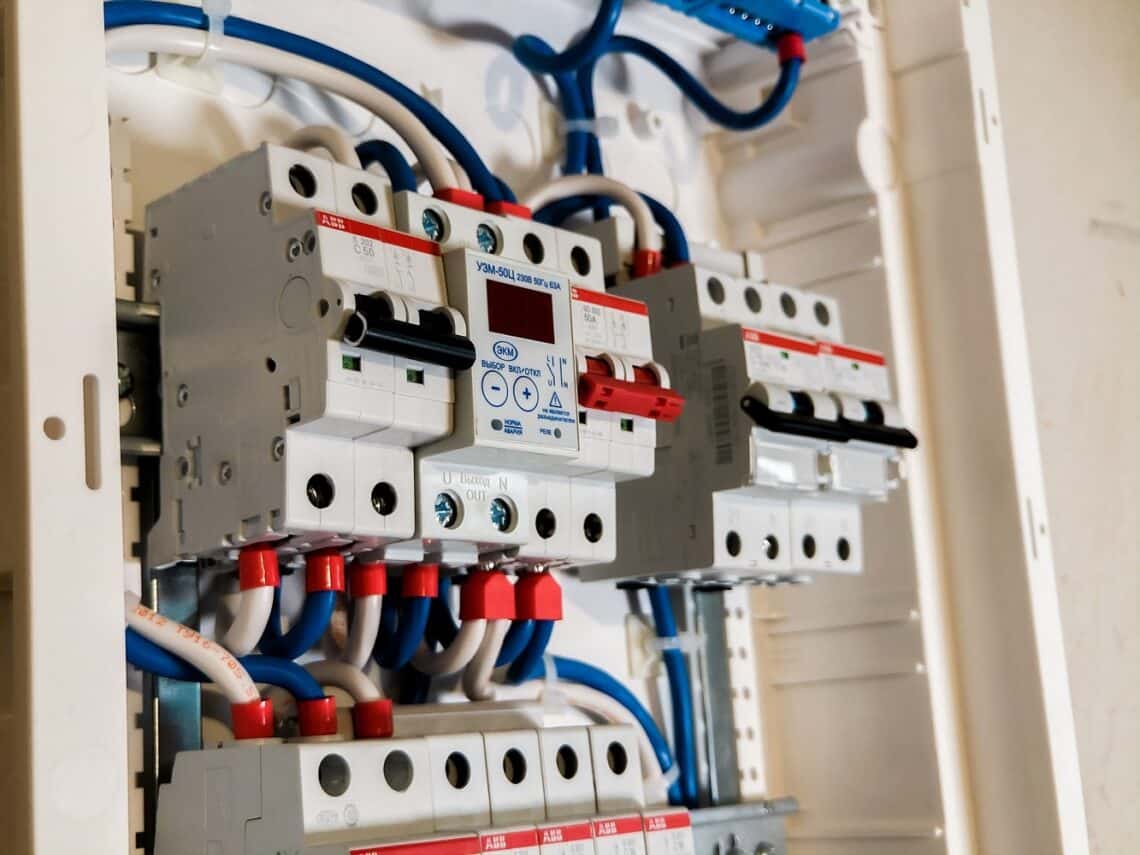Opened up a light switch box only to feel puzzled by all the colorful wires popping out? Turns out, they do mean something.
You might have had to deal with an electrical wiring issue in your house at some point or the other. However, not understanding the color-coding system can leave you feeling lost. The good news is – it isn’t as hard as you think it is.
Each color helps you identify the function of each wire. So, of course, understanding the colors will help you attempt any DIY electrical repair work successfully.
So, how can you get a better understanding of the electrical wiring color-coding system? Well, by going through our informative guide!
We have carefully broken down the color-coding system, so you have no trouble understanding it and dealing with your electrical wiring. Of course, make sure you do any electrical work carefully and with all the precautions.
So, let’s get to it, shall we?
Electrical Wiring Color Coding System

Why Are Electrical Wires Color Coded?
Wires inside an NM (Non-Metallic) sheathed cable are color-coded. This is to simplify the process of identifying them. The standard colors used for electrical wires in most homes are black, red, blue, yellow, white, gray, green, and sometimes bare copper wires.
These wires all have a different function in each circuit. Without the color-coding system, it would be near impossible to identify the wires and conduct any kind of work safely, learning the correct electrical wiring is extraordinarily important, let’s move on!
Parts Of An Electrical Wire
NM or Non-Metallic wires come in two main parts –
- Jacket (outer plastic sheathing)
- Inner color-coded wires
These wires are typically 20-volt and 240-volt electrical cable cables. The jacket binds the inner wires together. The markings on its body indicate the gauge and the number of wires within the jacket. The color of the jacket helps you identify the recommended usage of a cable.
For instance, a white jacket will indicate the inner wires being 14-gauge, whereas a yellow jacket indicates it being 12-gauge.
Upon opening up the jacket, you will find color-coded wires. These colors indicate different purposes, which we will talk about in detail below.

Colors Of An Electrical Wire
-
Black
Black wires are common in most standard households, being used for hot wires. These wires are termed ‘hot’ because they carry power from electrical panel services up to the destination (a light or an outlet). Black wires are considered to be live at all times and must be dealt with very carefully.
-
Red
These wires are secondary live wires in 220-volt circuits. They are most commonly found in sheathed, multi-conductor cables. These wires are called travelers and are used for two-way switch wiring.
Red wires are commonly used to connect hardwired smoke detectors to your home’s power system. Typically, if one alarm goes off, all the alarms are simultaneously triggered.
Since these wires carry current, they are also considered hot wires.
-
Yellow And Blue
These wires are generally used in more complicated circuits. They may be used as hot wires in electrical conduits. However, they are rarely found in NM cables.
The wires are most commonly used in three-way or four-way switch applications. Blue wires are typically used for this and are called travelers.
If you have two switches at the top and bottom of your staircase, which controls the same light, blue wires are used for them.
You will see yellow wires being used as switch legs to structural lights, ceiling fans, or even outlets paired with various light switches.

-
White And Gray
These are neutral wires; however, the name is dangerously deceptive. These wires also carry electricity and are capable of shocking anyone who touches them. Neutral wires are responsible for carrying power back to the service panel. White and gray neutral wires may only be connected to each other and are often found in a pair.
To complete any circuit, the current has to return to its power source, and these neutral wires do just that.
However, it is essential to note that they are sometimes marked with pieces of electrical tape (mainly black). This means that the neutral wire is acting as a hot wire. It is no longer neutral and is a live wire – meaning you must be extra careful with it.
-
Green
Green or bare wires are always used for grounding. They are used as a protective measure and are a crucial part of a circuit. It would be best if you never used a green wire for any other purpose other than grounding.
These wires connect to grounding terminals in outlet boxes. They return fault current to the earth, protecting individuals from electrocution.
-
Bare Copper
This is another type of wire used commonly for grounding. In the event of a fault, these grounding wires provide a safe path for the electricity to be directed towards the ground. These wires often connect to fixtures, switches, and outlets. They may also connect to housings and metal appliance frames.
Point To Be Noted
Even though you might understand the color-coding system and correct wiring, it is essential to take extreme precautions when dealing with them. Before you begin working on any fixture, fan, or wiring of an outlet, turn off the individual circuit breaker at the main panel. It will automatically cut the power supply to that circuit, saving you from any accidents or shocks.
It is also important to note that even with the power turned off, there is a danger of you making a wrong connection and ending up with an incomplete circuit. However, you do not run the risk of electrocuting yourself, so always turn off the main power supply.
Final Words
With this guide, we hope that you now understand the color-coding system of electrical wiring better. Knowing which wires accomplish what tasks is important when trying to repair any circuit.
Of course, we cannot emphasize enough on how important it is to be careful when dealing with electrical wiring and circuits.
Stay safe, and keep learning! Until next time!
Related Articles
16 of the Most Common Electrical Problems and Solutions You Should Know
Electrical Wiring Color Coding System 101
12 Best Electrician Tool Belts
7 Best Solder Suckers for Electronics
12 Best Multimeters for Electronics Technicians


